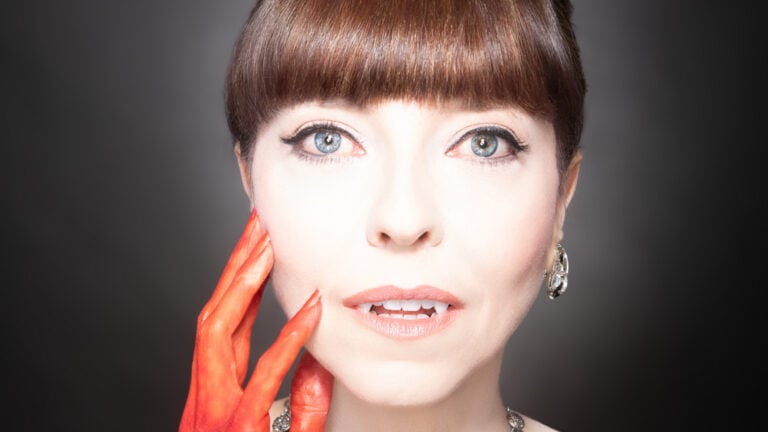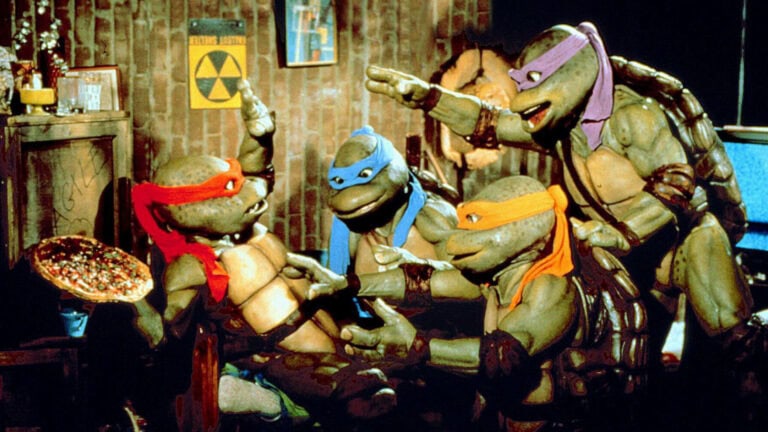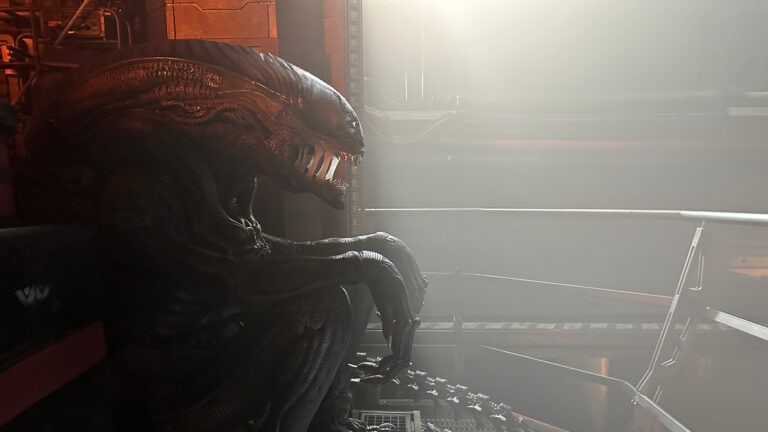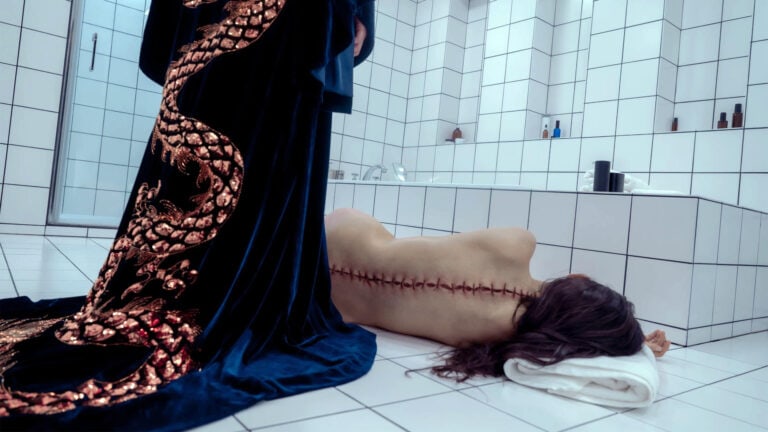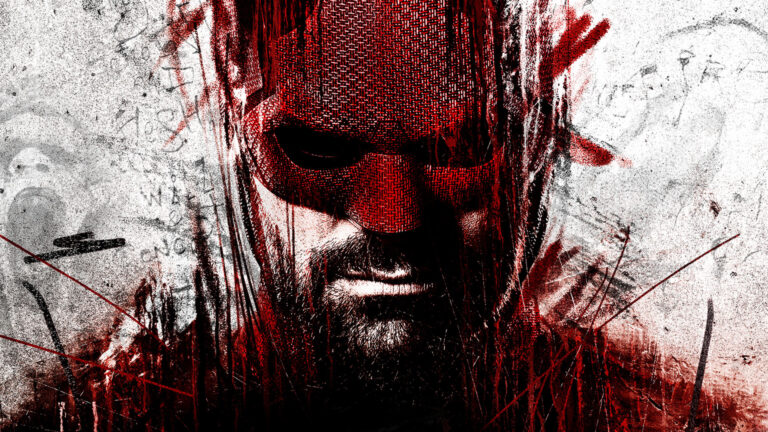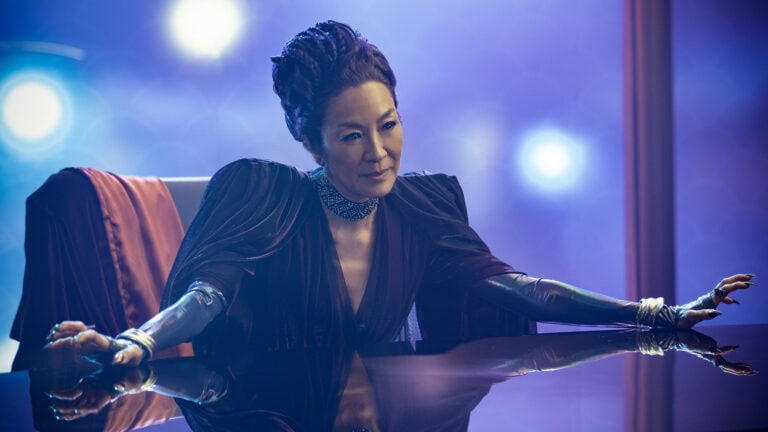Brendan Wayne: Embodying the Mandalorian
Brendan Wayne shared his inspiring journey portraying Din Djarin in The Mandalorian—from the initial costume fitting to the challenges and rewards of working on the Star Wars global phenomenon.
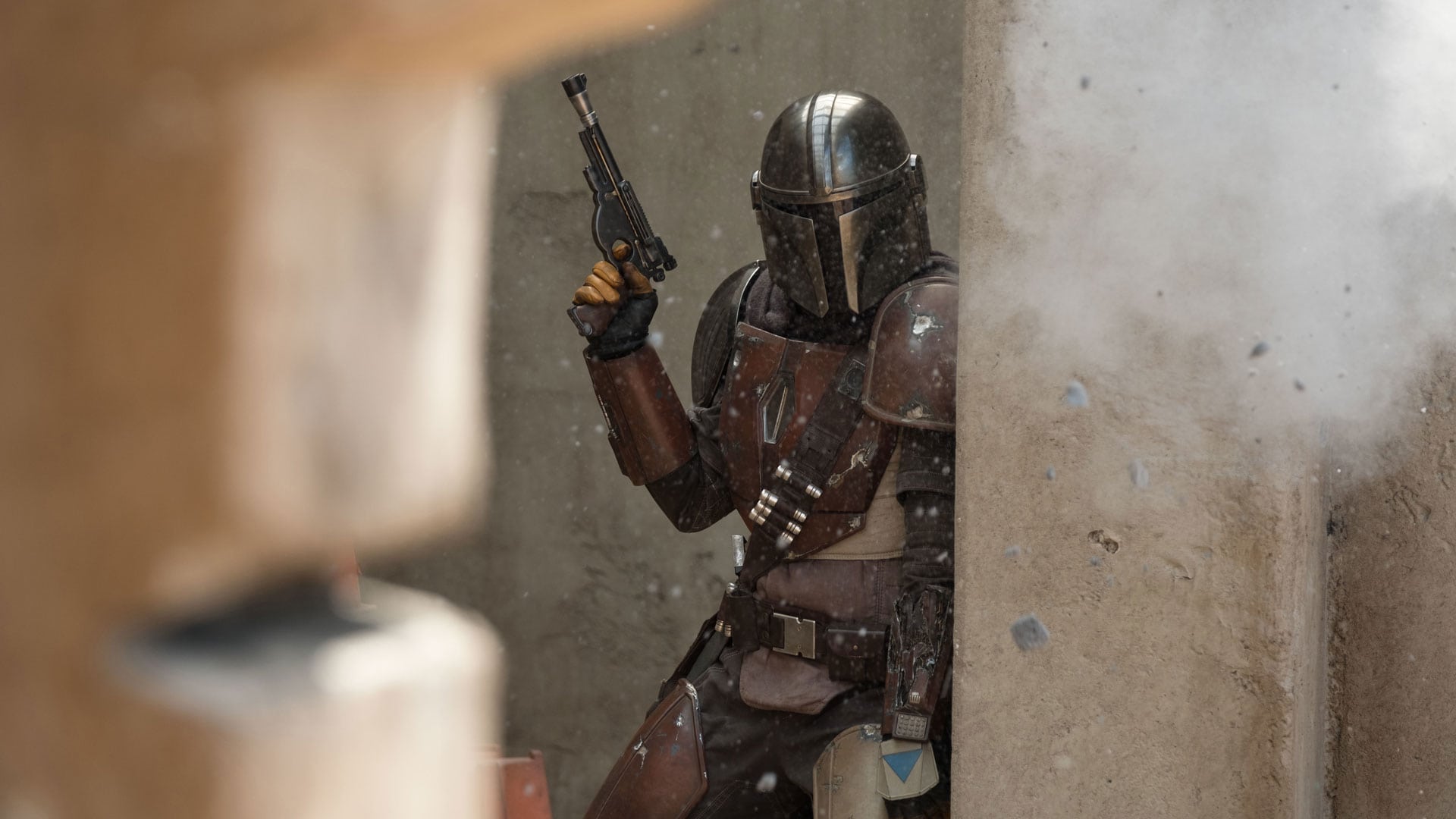
Who is the man behind the beskar? The question does not have a singular answer, as it takes an entire crew to bring a character to life. However, one constant performance that really solidified the physicality and presence of the Mandalorian lies within Brendan Wayne. Grandson of Hollywood legend John Wayne, the classically trained actor began his career in an episode of Angel, but it wasn’t until his role in Cowboys & Aliens that Wayne got on Jon Favreau’s radar, which led him to eventually wear the mantle of the pop culture icon. The Mandalorian himself, Brendan Wayne delved into his humble and inspirational journey portraying the character on set and what working with the crew of the Disney+ series has meant to him in these past years.
The Costume Fitting
Brendan Wayne was not the first choice for the lead role for The Mandalorian. Seasoned stunt performer Rich Cetrone was cast six months before Wayne got a phone call from Lucasfilm for a costume fitting. It was fate that the re-casting of the character crossed Brendan Wayne’s path: “I’m a physical dude, and Jon [Favreau] assumed I was a stunt man because I was willing to do a stunt on a horse in Cowboys & Aliens. He had remembered me on some level and that’s how I got called in to try it on,” Wayne said. The costume was just a bit longer for Wayne, but once he put the iconic helmet on, it all became clear that he was the one.
A week later, Brendan Wayne got another call from Lucasfilm, requesting him for a screen test, which the actor surprisingly refused due to personal reasons. The actor recalled, “My kid was going to college for the first time, so I was never going to miss this moment. I love acting, but love in its real sense, I’ll never find it beyond my kids. They managed to reschedule it, and so the day before I had to leave, I went down to Manhattan Beach for the screen test. To prepare beforehand, I wore a Boba Fett helmet I bought on Amazon and my motorcycle jacket that has pads all over … I wanted to get used to walking around in a helmet with a T-vision. I figured out how I could walk and almost split my vision so I could see around. The funny thing was the level of tint wasn’t as bad on the helmet they made at Legacy [Effects]. So I go, ‘Hey, I’m good.’”
Wayne immediately understood that Jon Favreau was going for a stylized Western look based on the costume design, and his passion and experience with the genre urged him to suggest some practical adjustments to the props department: “They showed me this huge rifle and I’m like, ‘That’s too big. I’m supposed to carry this on my back. I need something to connect it to my shoulder so that I can flip this thing off and hold it.’ Then I played with the gun and said to them, ‘I can’t have the holster high up on my hip because then I gotta bring my elbow up.’ I mean the audacity in retrospect of telling them what to do … but eventually we worked it all out.” Wayne also revealed a peculiar detail, that the costume shoes were not his size (he’s a 10 whereas the previous actor, Cetrone was a 12), forcing him to lean into his walk too much—something Jon Favreau noticed during the screen test and immediately worked on finding a suitable pair.
Acting under a helmet requires a certain subtlety to physically convey the emotions that can’t be shown by facial expressions. Wayne and Favreau worked together to fine-tune the Mandalorian’s presence on screen. Wayne said, “Jon had given me a couple of people to emulate, which was Schwarzenegger in The Terminator and Yul Brynner in Westworld; each of them were robots underneath, so there’s a stiffness that he wanted to Mando because he hadn’t found his soul.” Wayne added that “people always think that I copy my grandfather’s walking. I absolutely do not. As a matter of fact, I don’t walk that slow normally, and so didn’t he. On camera, you have to slow everything down; his famous quote, ‘Talk low, talk slow, and don’t say too much’ is essentially what Mando is.”
Three days later, Wayne got the call that he got the job, but his response was unexpected. He recalled, “My manager was like, ‘They want you.’ And I said, ‘What does that mean though? I know that technically I’m like David Prowse, so does that mean I have a regular job, like do I quit my bartending job?’ He goes, ‘You’re gonna have a day to day job, Monday through Friday.’ If I wasn’t saying lines, I wouldn’t have taken it because that’s not what I do. I do know that physically, I’m good at doing a lot of things that some other actors wouldn’t, but I’m not a stunt guy.” So Wayne accepted the role, and “all of a sudden unbeknownst to me, I’m being directed into this and it’s natural and it feels good. This is the greatest challenge I’ve had as an actor to this point.”
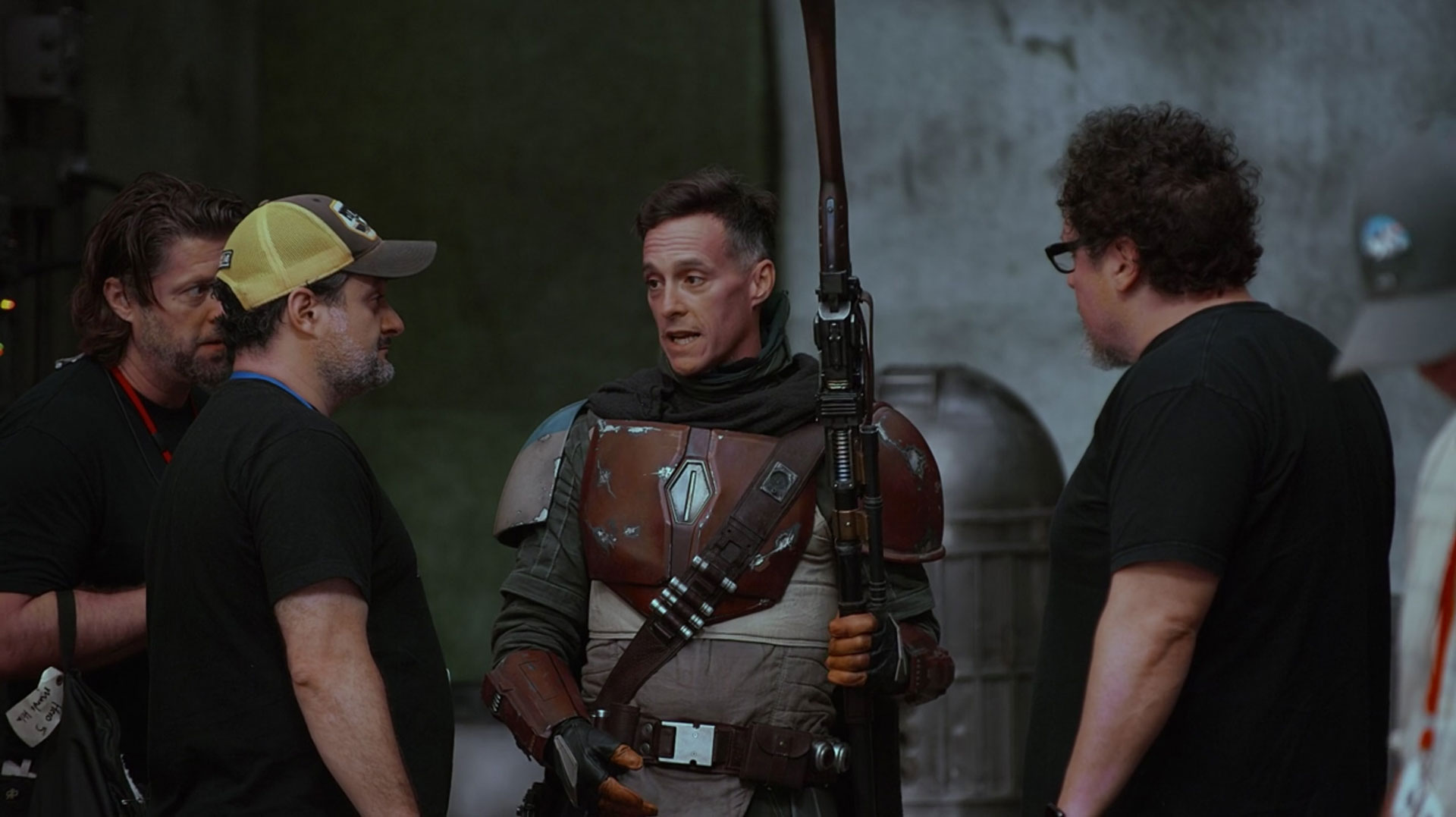
Carl Weathers’ Mentorship
Working with Carl Weathers, who plays Greef Karga in the show (and also directed an episode in Season Two) was a dream come true for Brendan Wayne—he grew up with the seasoned actor’s performances in the Rocky franchise and many other action flicks. The actor recalls his ultimate pinch me moment when he first started to work with Weathers: “I’m sitting across the table from Carl Weathers and said to him, ‘Mr. Weathers, Carl, you’re one of the reasons I am an actor. It’s hard for me to do this because the first time I ever cried in front of my friends was when you died in Rocky IV,’ and he couldn’t stop laughing. I don’t get awestruck. Growing up, my dad made sure we understood that everybody puts their pants on the same way, and that you don’t give anybody reverence unless they’ve earned it by their actions to you or those around you.” Wayne continued, “Carl is one of my greatest mentors that helped me deal with any issues; if I was feeling weak and sorry for myself he would tell me to cinch my belt up, stop bitching, and go do my work. [While shooting Chapter 3: The Sin] I was having a hard time running up the [Razor Crest] ramp. I was having to re-shoot and he said to me, ‘Hey, how would your grandfather do it?’ Then I go, ‘Well, he always led with his shoulder,’ and he was like, ‘You’ll never be able to accomplish it like he did. Do your own version.’ So I come up that ramp with the kid after the big fight in the street, and then he hops down and ambushes me. I shoot him, and the beskar saves him … I overcame getting up that ramp.”
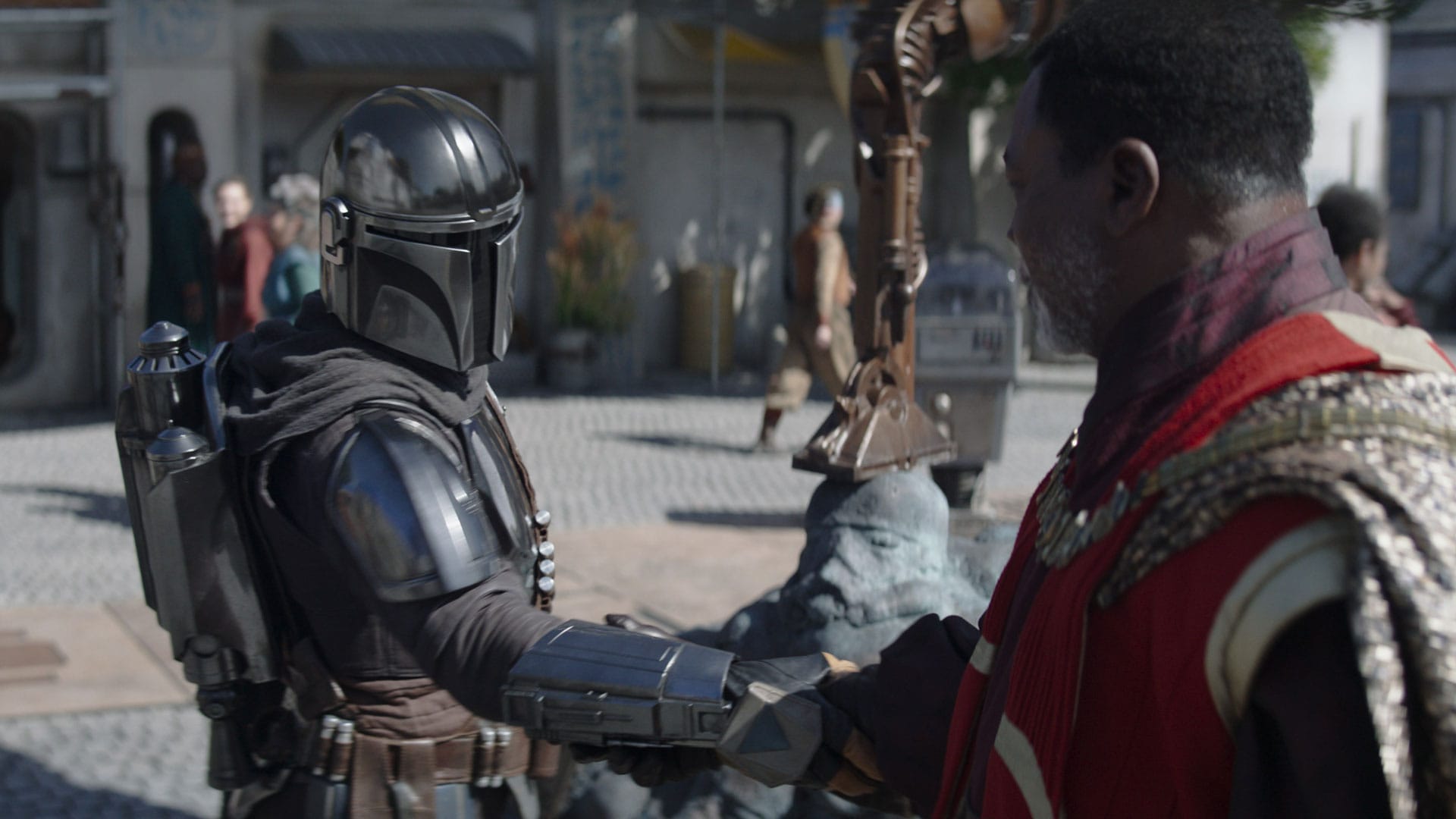
The Wound
Soon before Lucasfilm started shooting principle for the second season of The Mandalorian, Brendan Wayne almost lost his life. An appendix rupture turned into something much more serious: an intestine had attached to an adhesive from an hernia patch and ripped, leaking into his body. After his second surgery, Lucasfilm reached out to Wayne’s agent, requesting him to come back to reprise the role of the Mandalorian—only three days before the show started shooting. Although Wayne’s family tried to keep the news of his critical condition hushed, first Assistant Director Kim Richards and the rest of the crew eventually found out—and the response was overwhelmingly supportive, raising a fundraiser, sending him a storyboard signed by the entire crew, and even some of the cast came to visit him at the hospital. “I’m here on this Earth because of the grace of my wife, my family and a lot of other people who cared. That was when I knew, beyond the shadow of a doubt that my crew, we are amazing. Together, we can do anything for each other … they really did save me. By the end of it, once Jon found out (nobody wanted to tell him the bad news) he called Sara, my wife and was like, ‘What can I do? Do you guys need anything?’ He was great. And you know, that’s Mando. What you see on that screen, it bleeds from our souls. They didn’t have any contractual obligation to me … they could have moved on immediately but they didn’t,” Wayne shared.
Two weeks after he was released from the hospital, Brendan Wayne rushed back to The Mandalorian set on a daily contract, no guarantees at 144 pounds (he lost 30 pounds). “Putting on that costume again brought me from a place of desperation, weakness and darkness to a place of purpose. The fact that everybody on set was so happy to have me back, that it meant something to them—and it’s not an ego thing for me—it reminded me to never let my feet get off the ground,” Wayne reflected.
In Chapter 13: The Jedi, Dave Filoni wrote a traditional Western-style draw between Mando and Lang, played by Brendan Wayne and Michael Biehn respectively. Wayne admitted that this was a legendary moment—it felt like he was drawing with Johnny Ringo (played by Biehn) from the 1993 film Tombstone. It was a particularly challenging shoot as the actor was still recovering. Wayne said, “For me it wasn’t just a really cool acting moment where I got to do something that I dreamed of, which was having a duel, but it was also a moment for me personally where I was overcoming the pain that I was in—the crew didn’t know that I was literally changing my dressing every hour, I’d have to have the costumer take it off so I could go in and remove gauze because I still had an open wound on my midsection. That was difficult physically, but I needed to make sure that my fear of failure didn’t overwhelm Mando’s confidence in that moment.”
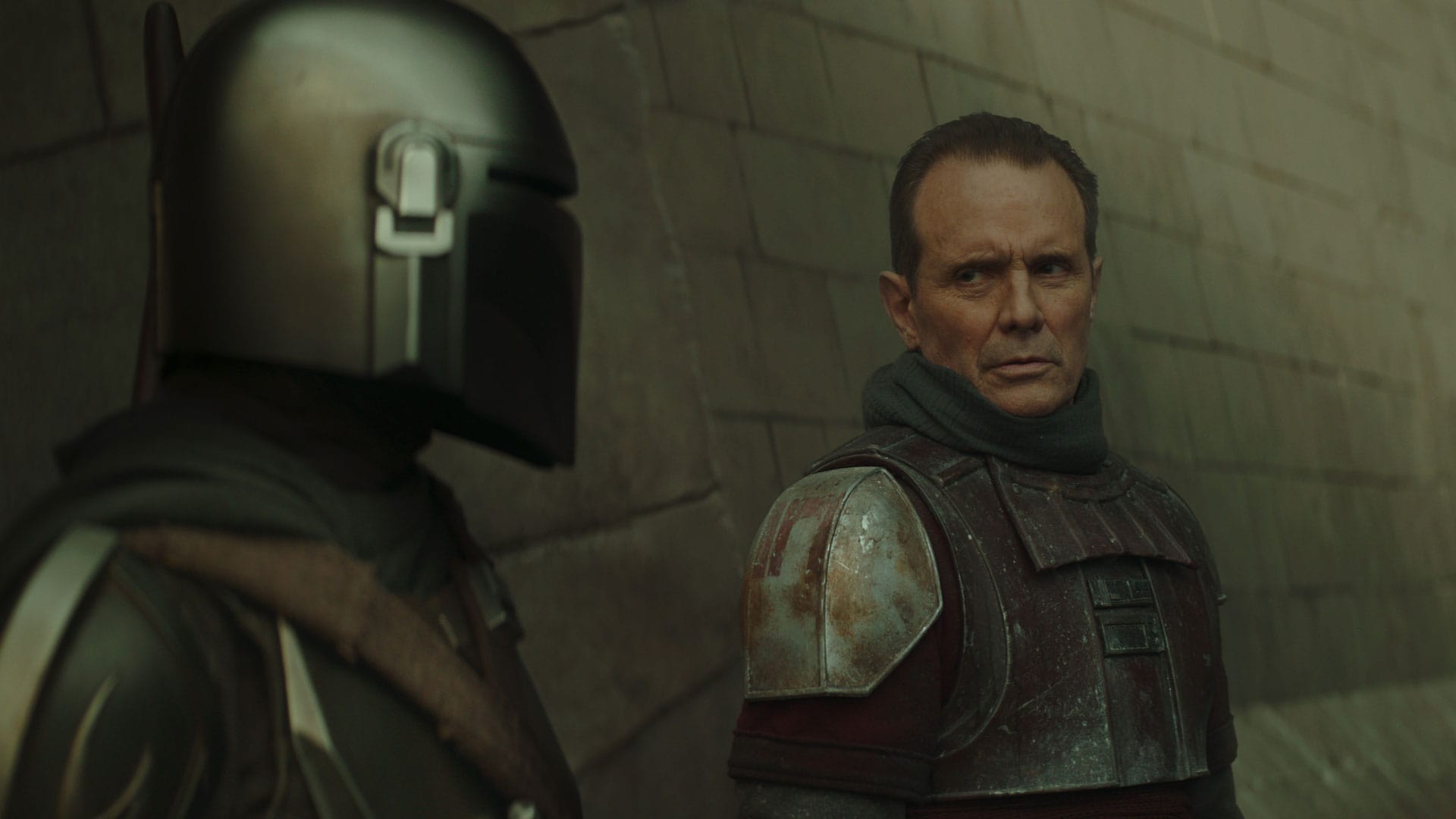
Mando Brothers: Working with Lateef Crowder
It’s no secret that the brotherhood between Brendan Wayne and stunt performer Lateef Crowder is one of the strongest in the movie industry. Their collaboration in bringing the Mandalorian character to life, the physicality they created on set is what makes the show so special. “Lateef is just scratching the surface of how talented he is [in The Mandalorian]. Mind you, this dude never stops working. He is one of the most amazing human beings I’ve ever met. When we started this, it was Lateef, [Stunt Coordinator] Ryan Watson, and myself; we were trying to define something that matched what Jon wanted, which was a gritty Western, 100% unpolished, just like Mando’s armor initially.” Wayne remembered the day he was requested to sign autographs, revealing that he refused to do it without Crowder: “I told them, ‘That’s my guy, we’re brothers, so that’s how it’s gonna work.’ I could have done it myself, but it wouldn’t have felt right because it would be like stealing somebody else’s art and saying it was yours. I couldn’t do that. If you’re an artist you should always honor that no matter what, you should never be so egotistical as to take somebody else’s art. I’m not above him, we stand together.”
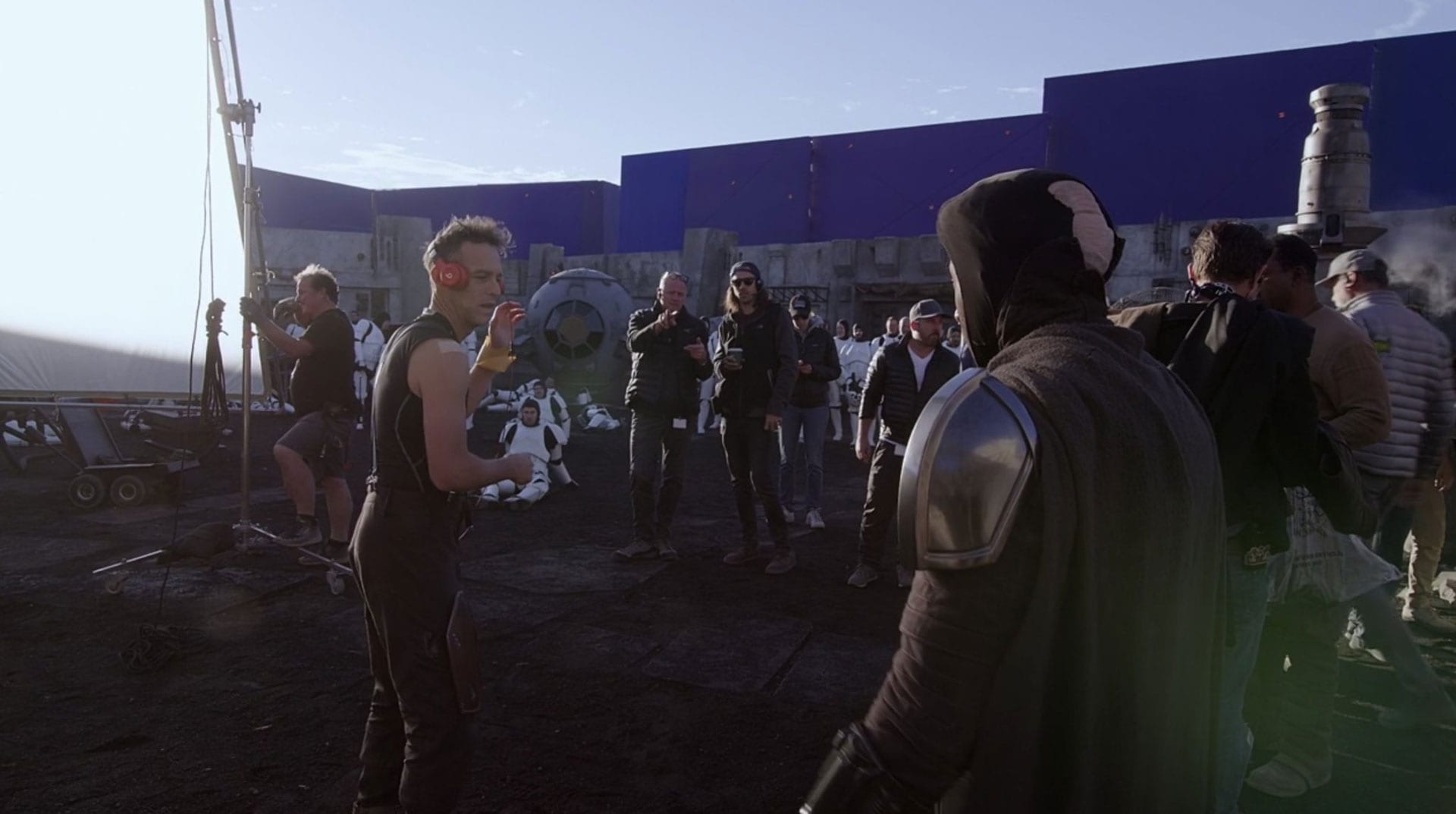
The Mandalorian is About Family
As mentioned at the beginning of this interview, it takes an entire crew to bring a character to life. This is an understatement, as The Mandalorian crew is more than a group of people that work well together—they are a family. Wayne shared this sentiment throughout the interview, and said, “My crew, my first Assistant Director Kim Richards, she’s unbelievable. She’s always there to support me. Sam the carpenter, Hillary the painter, we all made a difference on Mando. Making that production great is not just for me, but for every human being that is involved in that show … there’s nothing more important to me than that.” At the center of The Mandalorian is the theme of found family, Din Djarin finds Grogu, and their creed resonates with the audience, the fans. Wayne shared the same sentiment, “The kid taught me that creed is a guide and sometimes you have to find a new path because it’s either too trodden, dangerous, or it doesn’t benefit the greater good. He constantly reminds me and brings me to people who remind me that there’s a bigger picture. Mando is more to me than a script; it’s an opportunity to service a fandom I’m part of, to tell a story I’m proud of and to be a character I can relate to because he’s human, no matter what.”
This is the way. Brendan Wayne’s journey behind the beskar has been incredibly humble and inspiring to say the least, but it’s far from over: he will return on Season Three that airs May 1st, 2023. “Alright kid. You ready for an adventure?” Follow along his Star Wars journey on Instagram and on Disney+.
